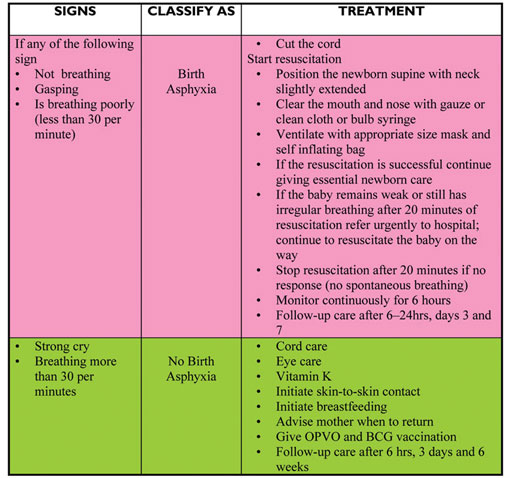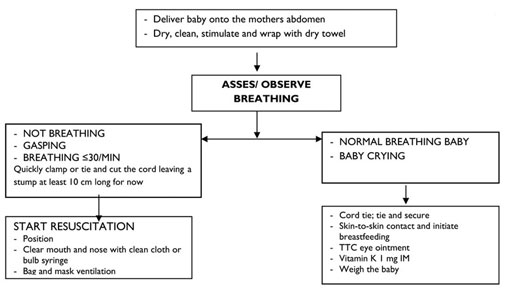Assess and classify birth asphyxia
If you are attending a delivery or a baby is brought to you immediately after birth, you should assess for birth asphyxia. Assess the baby after drying and wrapping him or her with a dry cloth. To assess for birth asphyxia, you need to look and listen for breathing patterns.
Assess asphyxia
- No breathing: the newborn has not cried or there are no spontaneous movements of the chest.
- Gasping: the newborn attempts to make some effort to breathe with irregular and slow breathing movements.
- Breathing poorly: count breaths in one minute. The normal breathing rate of a newborn baby is 30‒60 per minute. If the breathing rate is less than 30 per minute it is a sign of asphyxia.
Classify asphyxia
There are two possible classifications:
It is critical that you treat birth asphyxia quickly; if you don’t, the baby may die or may develop complications from which he or she never fully recovers. Table 2.1 sets out a summary of the signs of asphyxia and the treatment that should be given.

If you need to remind yourself about the detail of how to manage birth asphyxia you should revisit Study Session 7 of the Labour and Delivery Care Module.
If there is no birth asphyxia and the baby is crying strongly or breathing more than 30 breaths per minute you should continue with essential newborn care, as summarised in Figure 2.6.
